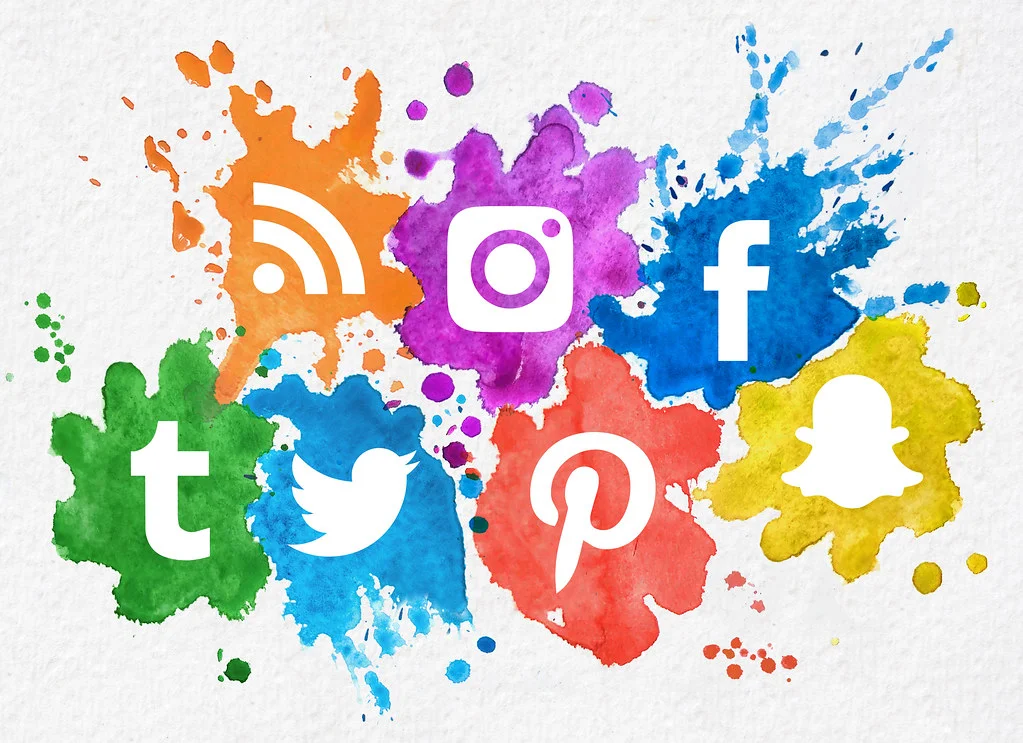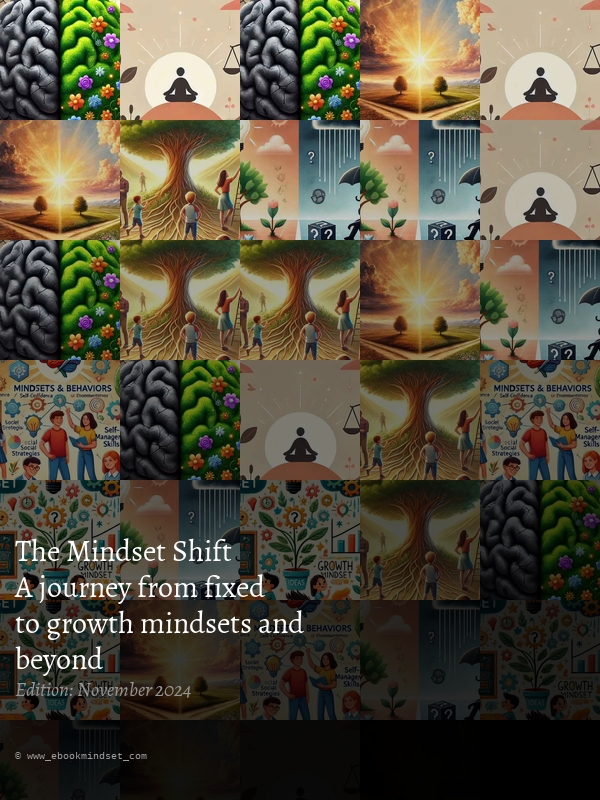Understanding the Media Mindset: A Comprehensive Exploration
In today's digital age, dominated by social media, understanding the "media mindset" is crucial. This article delves into its complexities, exploring the psychological underpinnings and implications for content creation, marketing, and personal well-being. By examining the psychological drivers behind social media use, we can gain a clearer understanding of how these mindsets shape our behaviors and perceptions, influencing everything from our relationships to our mental health.
What is a Media Mindset?
A media mindset encompasses an individual's core beliefs and expectations regarding their media interactions, particularly on social media. These beliefs significantly influence how users perceive their control over their consumption, its effects on their lives, and their overall engagement with digital content. Two key dimensions define media mindsets: agency and valence.
Agency
This reflects an individual's perceived control over their media use. Do they feel empowered and in charge of their social media experience, or do they feel compelled and controlled by it? A high sense of agency suggests users feel they are actively choosing their engagement, while a low sense indicates feeling passively driven by the platform or external forces.
Valence
This refers to the perceived effects of media use – is it beneficial or harmful? Positive valence suggests meaningful experiences, positive emotions, and a sense of connection. Negative valence, on the other hand, indicates feelings of stress, anxiety, inadequacy, or even addiction. The perceived valence significantly impacts how individuals interact with and view social media.
These mindsets significantly impact psychological well-being, influencing social relationships and mental health. Individuals viewing social media as a tool for achieving personal goals – connecting with friends, building a community, staying informed – often report stronger connections and less distress. In contrast, those who perceive it as a source of stress, comparison, or addiction experience negative impacts on their emotional and mental health.
The Psychology Behind Media Mindsets
Understanding the psychological mechanisms driving media mindsets is vital for both users and marketers. Key drivers include:
1. Cognitive Dissonance
Cognitive dissonance refers to the discomfort experienced when holding conflicting beliefs or engaging in behaviors that contradict one's values. On social media, this can manifest as the tension between the desire for connection and the awareness of the negative effects of overuse. This dissonance can lead to various behavioral changes, such as reducing social media usage, altering engagement strategies, or even justifying excessive use to reduce the cognitive conflict. Understanding this internal conflict is key to managing one's relationship with social media.
2. Fear of Missing Out (FOMO)
Fear of Missing Out (FOMO) is the anxiety that comes from the belief that others are having rewarding experiences one is missing. This fear, particularly prevalent on social media, drives increased engagement, often leading to compulsive checking and a reinforcement of negative mindsets about agency. Individuals feeling a strong sense of FOMO often find themselves trapped in a cycle of constant checking, impacting their productivity and well-being.
3. Social Comparison Theory
Social comparison theory suggests that individuals determine their self-worth by comparing themselves to others. Social media exacerbates this process, exposing users to meticulously curated representations of others' lives, often highlighting achievements, successes, and seemingly perfect moments. This constant exposure can lead to feelings of inadequacy, low self-esteem, and negative self-perception, especially among younger users still developing their sense of self. The curated nature of social media often distorts reality, leading to unrealistic comparisons and detrimental self-evaluation.
4. Validation and Reward Systems
Social media platforms often utilize reward systems, such as likes, shares, comments, and follower counts, which provide immediate gratification. This constant feedback loop reinforces certain behaviors and shapes users' mindsets around the importance of external validation. The dopamine rush associated with these rewards can create addictive behaviors, making it difficult to disconnect and leading to a dependence on external validation for self-worth and self-esteem.
5. Information Overload and Attention Capture
The sheer volume of information and constant notifications on social media platforms contribute to a state of information overload. This overload competes for attention and cognitive resources, leading to mental fatigue and reduced capacity for focused work or reflection. The algorithms designed to maximize engagement often prioritize sensational or emotionally stimulating content, further contributing to this attention capture and potentially fostering a negative media mindset.
6. Online Identity and Self-Presentation
Social media platforms allow users to curate and present idealized versions of themselves. This process of online identity construction can be both positive and negative. While it can foster creativity and self-expression, it can also create pressure to conform to certain social norms and expectations, potentially leading to feelings of inadequacy and anxiety if users feel they cannot live up to their curated online personas. The gap between online presentation and offline reality can contribute to feelings of disconnect and a negative valence associated with social media usage.
The Impact of Media Mindsets on Content Creation
Understanding media mindsets is essential for effective marketing and content creation strategies. Consider:
1. Tailoring Content to Audience Mindsets
Content should be carefully tailored to resonate with the target audience's media mindset. Users with high agency respond well to empowerment and community building, appreciating content that gives them a sense of control and encourages active participation. In contrast, users with low agency might require support, understanding, and content that addresses their concerns and insecurities. This requires a nuanced understanding of your target audience's psychological drivers and relationship with social media.
2. Utilizing Psychological Triggers
Effective content leverages psychological triggers aligned with user emotions, such as:
- Urgency: Time-limited offers, exclusive content, or announcements of upcoming events can tap into FOMO and incentivize immediate action.
- Participation: User-generated content, polls, quizzes, and interactive features foster a sense of belonging and community, promoting positive valence and high agency.
- Visual Appeal: Engaging visuals, captivating storytelling, and aesthetically pleasing design capture attention in a short-attention-span environment, making content more memorable and shareable.
- Social Proof: Highlighting testimonials, reviews, and endorsements can leverage social comparison in a positive way, building trust and credibility.
3. Building Community and Connection
Creating opportunities for meaningful interaction and engagement can significantly shift negative mindsets. Building a sense of community through discussions, forums, shared experiences, and collaborative projects fosters a positive valence and empowers users, increasing their sense of agency. It fosters a sense of belonging and shared purpose, counteracting the isolation and comparison often associated with social media.
4. Promoting Authenticity and Transparency
In an environment characterized by curated content and idealized representations, authenticity resonates strongly with audiences. Transparent communication, showcasing both successes and challenges, builds trust and fosters genuine connections. This approach can counteract the negative effects of social comparison and create a more positive valence associated with the brand or content.
Strategies for Developing a Positive Media Mindset
Cultivating a healthier relationship with social media involves intentional effort and self-awareness. Strategies for developing a positive media mindset include:
1. Mindful Consumption
Practicing mindful consumption involves paying close attention to your thoughts and feelings during social media use. Reflect on how different interactions make you feel. Identify patterns of usage that contribute to negative emotions and consciously adjust your habits to reduce exposure to triggering content or platforms.
2. Setting Boundaries
Establishing clear boundaries is crucial for mitigating compulsive behaviors. This could involve designating specific times for checking social media, limiting daily usage, or creating technology-free zones and times. Setting and sticking to these boundaries helps regain control and reduce the feeling of being passively driven by the platform, increasing one's sense of agency.
3. Curating Content
Actively curate your feeds to focus on accounts that promote positivity, well-being, and personal growth. Unfollow accounts that consistently induce negativity, comparison, or stress. This deliberate selection of content shapes your online experience and contributes to a more positive valence associated with social media.
4. Engaging Authentically
Prioritize meaningful conversations over superficial interactions. Focus on building genuine connections with others rather than seeking superficial validation through likes and comments. Authentic engagement fosters deeper relationships and contributes to a sense of purpose and belonging, enhancing one's sense of agency and overall well-being.
5. Taking Breaks and Digital Detox
Regularly taking breaks from social media, even short ones, can help reset your mindset and prevent information overload. Periodic digital detoxes, where social media is avoided for a set period, offer an opportunity to reflect on your relationship with the platform and re-evaluate your usage patterns.
6. Seeking Support
If you find yourself struggling to manage your social media usage or its impact on your mental well-being, seeking support from friends, family, or mental health professionals is crucial. They can provide guidance, support, and resources to help you develop healthier habits and a more positive media mindset.
Conclusion
The media mindset encapsulates the complex interplay between our beliefs about social media and its psychological impacts. Understanding the dimensions of agency and valence is critical for both users and marketers to effectively navigate this dynamic digital landscape. Fostering positive mindsets is not just desirable but essential for enhancing online experiences and mitigating potential harms.
Whether you're a marketer crafting compelling content or an individual striving for a healthier digital life, recognizing the power of your media mindset is paramount for achieving your goals in this ever-evolving digital environment. By understanding the psychological forces at play and employing proactive strategies, we can cultivate a more positive and productive relationship with social media, leveraging its benefits while mitigating its potential drawbacks.




